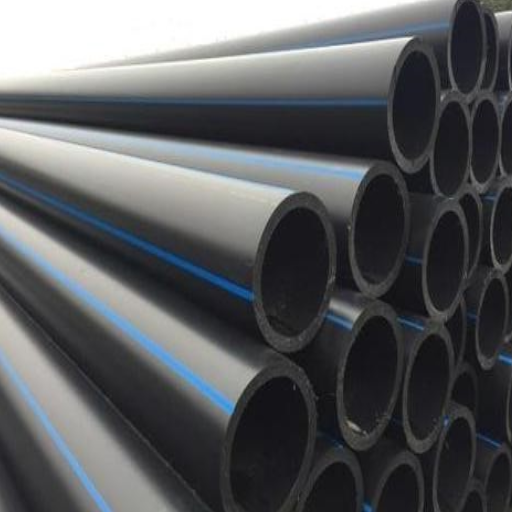High-density polyethylene (HDPE) pipes have become a critical component in modern infrastructure, known for their durability, flexibility, and resistance to harsh environmental conditions. However, one of the most important factors in determining their suitability for various applications is their pressure rating. Whether used in water distribution, gas transfer, or industrial systems, understanding how HDPE pipe pressure ratings work is essential to ensuring longevity and safety in any project. This guide delves into the technical details of HDPE pipe pressure ratings, exploring how these ratings are calculated, the factors that influence them, and why they matter for both engineers and project decision-makers. By the end of this article, you’ll have a clear foundation for making informed choices when it comes to selecting the right HDPE pipe for your specific needs.
What is HDPE Pipe and Why is it Important?
Understanding High-Density Polyethylene (HDPE)
High-Density Polyethylene (HDPE) is a thermoplastic polymer possessing a rather high strength-to-density ratio, and thus, making it a very versatile product for use in different industrial applications. HDPE, made from petroleum by polymerization, has strong intermolecular forces and tensile strength. Hence, it is best used in piping systems requiring resistance to wear and tear, chemicals, and yet flexibility. HDPE is different from other plastics in that it has fantastic impact resistance and stress-crack resistance; thus, any surface treated with it will last longer even in the presence of extremely high pressure or extreme temperature.
Another notable advantage of HDPE is that it is non-corrosive, so the material does not degrade or get weakened upon contact with chemicals, moisture, or soil. Hence, HDPE pipes are considered superior in the fields of water distribution, gas transmission, and wastewater management. Considering this, they are lightweight: this significantly reduces transportation and installation costs; however, the inner surface of HDPE pipes is as smooth as possible, so it provides minimum friction losses-to-the enhancement of flow efficiency.
Besides that, HDPE remains a green material. It is fully recyclable, and less energy is involved in its manufacture than in any conventional material such as steel or concrete. As people became aware of environmental concerns and operating efficiency, HDPE would be necessitated in the forefront of modern engineering solutions.
Types of HDPE Pipes
High-Density Polyethylene pipes are classified on the basis of design, application, and pressure ratings to meet various functions in multiple industries. The major types of HDPE include:
- Corrugated HDPE Pipes: In drainage systems and stormwater management, except for those situations wherein the application permits a rigid pipe, HDPE corrugated pipes are used because of their strength and durability. The corrugated profiles give them the ability to resist external load while being very lightweight. Often used in agricultural and industrial environments, these pipes are best chosen for their resistance to chemical attacks and UV degradation.
- Smoothwall HDPE Pipes: Designed for a constant flow, smoothwall HDPE pipes find extensive application in water distribution and potable water systems. With friction losses kept to a minimum due mainly to their frictionless interior, these pipes provide the best flow rates. Additionally, they qualify for drinking water use with specified safety standards, making them the popular choice in municipal water supply projects.
- HDPE Pipes Based on Pressure Rating (PN): HDPE pipes exist in all pressure classes named according to their pressure rating, usually between PN4 to PN25. Being able to work with the chosen rated pressure will ensure the system can deal with the operational pressures without any loss of efficiency or compromise on safety. These pipes are those that will be subjected to the highest pressure rating in systems such as firefighting or industrial fluid transport.
- Coiled HDPE Pipes: This type of pipe finds applications where long, continuous runs are required, such as an irrigation network and fiber optic cable conduit. Being available in long lengths reduces the need for jointing, which would create potential weak points in the system. This facilitates an easier adaptation to uneven terrain.
- Perforated HDPE Pipes: These are used for subsurface drainage, where the water is collected and redirected for waterlogging prevention. Perforated HDPE pipes are used in agricultural fields, infrastructure buildup, for soil stabilization, and groundwater control.
Each type of HDPE pipe is designed with its features to cover the operational and environmental needs of the industry. Recent advances in material formulations and manufacturing have brought about the development of HDPE pipes with improved strength and ecological friendliness, which have further enhanced their versatility for use in diverse applications. Their utility and versatility speak volumes about the increasing favor HDPE is gaining in modern infrastructure and engineering.
Applications of HDPE Pipes
HDPE material is considered to produce strong pipes that are used in a huge number of industries. These pipes offer corrosion resistance, flexibility, and chemical resistance. HDPE pipe is mainly employed in water distribution systems for transporting potable water, where the pipes are non-toxic and provide leak-proof conveyance for water for use. Similarly, HDPE pipes are also extensively used for sewage and stormwater, as they can withstand harsh environmental conditions and provide long-term performance with minimum upkeep.
HDPE pipes are particularly interesting in industries for interprocesses for chemical, gas, and compressed air transportation due to their chemical and abrasion resistance. They are extant in irrigation systems considered essential to agricultural inputs to ensure efficient water application and prevent wastage of resources. Another great use is in telecommunications and electrical sectors to provide protection for underground cables against external impacts and environmental factors through conduits. Also, in mining for slurry transportation, HDPE pipes have received applications, as they can sustain heavy loads and resist abrasive wear inflicted by slurry materials.
These diverse applications are things that portray HDPE pipe as a versatile and affordable means, thus becoming an unavoidable companion in modern-day engineering projects and an essential facility in consequence of the development of sustainable infrastructure.
How to Determine the Pressure Rating of HDPE Pipes?
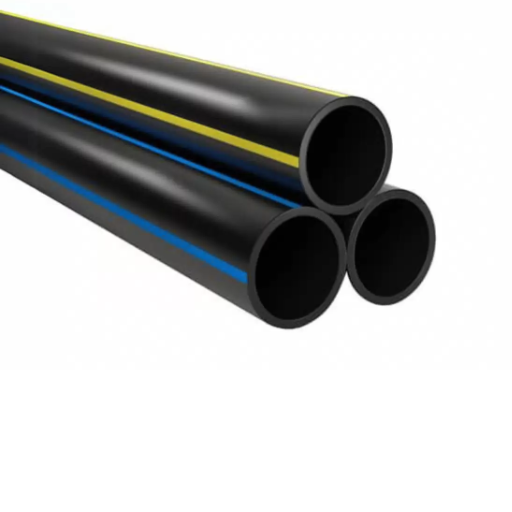
Understanding Pressure Grades
The pressure rating of HDPE pipes depends on their Standard Dimension Ratio (SDR), which is the ratio of pipe diameter to its wall thickness. Thus, the lower the SDR, the thicker the walls, and the more pressure it can withstand. Such a correlation allows an engineer to select a pipe suitable for the pressure requirements pertinent to a particular project. For example, an HDPE pipe with an SDR of 11 usually handles higher internal pressures than one with an SDR of 17.
A further dimension to be considered in the pressure rating is the material’s stress-resistance and temperature-resistance. HDPE pipes are generally classified according to their Pressure Nominal (PN) series values, which correspond to the maximum operating pressure expressed in bars at a standard temperature of 20°C. Pressure derating factors must be accounted for at temperatures higher than this reference temperature because high-temperature soaking weakens the mechanical properties of the material.
Accepted by hydraulic modeling software, advanced calculation methods and software provide precise calculations accounting for flow rate, pressure drop, and pipe measurements. It allows one to engineer for HDPE pipe thickness that meets operating and safety demands. Mastering these pressure-grade designations leads to a pipe system that performs optimally and is free of failures for an extended time.
Pressure Testing and Requirements
The pressure testing phase is critical to ensure the structural integrity and dependability of HDPE piping. The process consists of putting an internal pressure on the pipe, controlled and according to specification, to assure its ability to carry operational loads without leakage or deformation.
Most common is the scenario of hydrostatic pressure testing, whereby water is used to fill the pipe, the pressure is gradually increased up to a particular level-an example is 1.5 times the rated operating pressure of the pipe, and then sustained at that level for an appointed period to foresee any failures or weaknesses of the material or system. During test execution, temperature, pipe diameter, and wall thickness require close monitoring, for these considerations weigh heavily on the test results and eventual performance.
Other than these, in several special scenarios, technology might resort to pneumatic testing, though greater precautions need to be taken concerning the elevated dangers posed by compressed gases. Using data-logging facilities while testing provides real-time monitoring and detailed analysis, so engineers can get alerted to any abnormalities right away.
Strict compliance with testing requirements ensures not only compliance with regulatory standards but also guarantees a higher level of safety and function of the system. In fact, documentation of the testing procedure and the results are fundamental for the validation of the said procedure, and for reference for future purposes, both supporting the operational reliability of the system.
Factors Affecting Pressure Rating
The pressure rating of a system is derived from a combination of material properties, design parameters, operational states, and environmental factors. In this respect, one of the most important considerations is the material composition of the pipes, valves, and fittings. Materials that bear higher tensile strengths and better corrosion resistance, such as stainless steel or some alloys, have correspondingly higher pressure ratings. The piping wall thickness and diameter are also important because thicker walls permit the system to sustain higher internal pressures.
Temperature assumes vital importance in this perspective, as the majority of materials undergo changes in strength and elasticity with temperature. High temperatures tend to diminish the material strength and thus lessen the capacity for withstanding pressure, while very low temperatures may lead to a material becoming brittle and cracking. Also, outdoors, long-term exposure to aggressive chemicals, UV radiation, and/or high humidity can impair material integrity.
Operational factors include dynamic pressure conditions, which bring about higher stresses for the system components. Such conditions, referred to as transient conditions, sets higher values than those of steady-state pressure ratings of the system, and it is design practice to allow safety margins to counteract them. The longest time of use and maintenance of the system are very crucial in keeping the intended pressure rating in place during the working life of the system, together with observance of all standards governing the design and installation of the system. All these factors should be taken into consideration during system design and maintenance with the sole intention of ensuring operational safety and reliability.
What are the Different Types of Pressure Applications for HDPE Pipes?
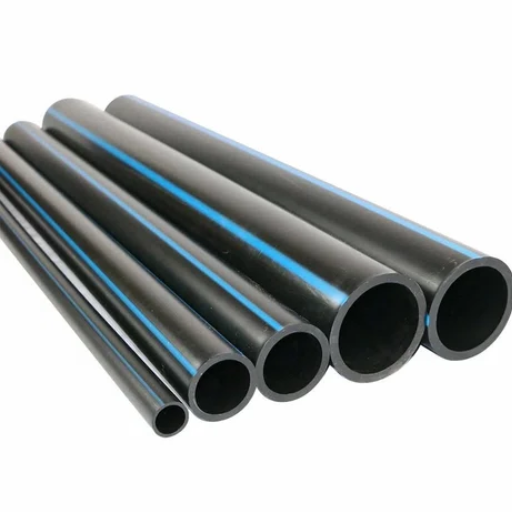
Water Supply and Distribution
High-density polyethylene pipes are the pipe of choice for water supply and distribution due to its characteristics of strength, flexibility, and corrosion resistance. The pipes are designed for potable water applications and non-potable water applications, both meeting stringent requirements such as NSF/ANSI 61 for drinking water safety. These pipes offer adequate serviceability for variable pressures, i.e., for municipal water distribution networks, domestic connections, and irrigation schemes.
Technically, HDPE pipes resist internal pressure variations as per their standardized nominal pressure (PN) rating for long-term serviceability. For example, pipes having a PN rating of 16 are able to withstand a pressure of 16 bars under standard conditions. In addition, these pipes prevent leakage of water as their joints are welded by heat fusion to create seamless and leak-proof joints. Besides, HDPE pipes have a smooth internal lining, which reduces the friction losses, thus improving hydraulic efficiency and decreasing pumping energy costs.
Engineering, geological, and climatic conditions; temperature variations; and mechanical stress imposed over the lifetime of the pipes must be kept in mind while installing HDPE pipes in a water distribution system. Their general expectancy more than 50 years renders them highly cost-effective for infrastructure projects. When installed following the recommended practices and within standard codes, HDPE pipes in water supply systems provide great long-term performance and reliability.
Gas Distribution and Natural Gas Applications
HDPE pipes are widely used in gas distribution and natural gas applications because of their high strength, flexibility, and chemical resistance. All these properties are of utmost importance in the smooth and safe transport of natural gas over long distances.
Some pertinent details and benefits of HDPE pipes in the gas distribution sector:
- Corrosion Resistance: HDPE pipes do not corrode internally or externally from natural gas or soil contaminants, reducing maintenance requirements, thus ensuring longer service life.
- Superior Joint Performance: The fusion welding process renders HDPE joints leak-proof monolithic joints, ensuring safety in containing natural gas with no possibility of joint failure.
- Highly Flexible: Unlike rigid piping systems, HDPE pipes are hugely flexible, thus making the installation in areas with seismic threat and demanding terrain an easy job.
- Durable Under Pressure: HDPE pipes are capable of withstanding high-pressure levels involved in gas transportation, thus ensuring that the gas delivery is efficient without compromising the structural integrity of the pipeline.
- Cost-Effectiveness: Due to their durability, granting a service life of more than 50 years, they prove to be a worthy investment for any gas distribution network.”
All these factors contribute to giving HDPE pipes a prominent position in the modern gas distribution system, thus ensuring utmost performance with safety and long-term economic benefits.
Industrial Applications of HDPE Pipes
The robustness, flexibility, and chemical resistance conferred on HDPE pipes make them useful in a multitude of industrial applications, especially where there is a need for dependable and efficient piping systems.
- Water Supply Networks: HDPE pipes are employed extensively in municipal and industrial water supply schemes. Leak-proof joints and corrosion resistance enable effective water conveyance with minimum water wastage.
- Sewage and Industrial Wastewater Systems: It offers good resistance to chemical attack and abrasion, and these systems suit HDPE pipes for municipal sewerage and industrial waste disposal. They can handle various pH values and retain integrity even under pressure.
- Oil and Gas Transportation: HDPE pipes are extensively used for oil and gas transport of hydrocarbons, especially in the upstream and midstream sectors. Their capability of withstanding high-pressure corrosive substances makes them sought after as alternatives.
- Agriculture and Irrigation: Flexibility and resistance to UV are some of the qualities for which HDPE pipes have been widely used in irrigation systems. The application of these pipes is limited, and the lightweight design allows for ease of installation and movement over fields for cultivation.
- Mining Operations: Mining operations require heavy-duty pipes for the transport of abrasive slurries, gravel, or other materials. High wear resistance and further extended service life characterize HDPE pipes to meet such requirements.
- Industrial Effluent Management: Those industries that generate hazardous or non-hazardous liquid wastes use HDPE pipes for disposal. Their chemical resistance ensures that effluents get contained and transported safely.
These scenarios exaggerate the importance and applicability of the HDPE pipes throughout the industrial yards. Their value is often realized when they are able to perform satisfactorily under adverse conditions, obviously in large-scale projects where system reliability and life span are of prime importance.
How to Choose the Right HDPE Pipe for Your Needs?
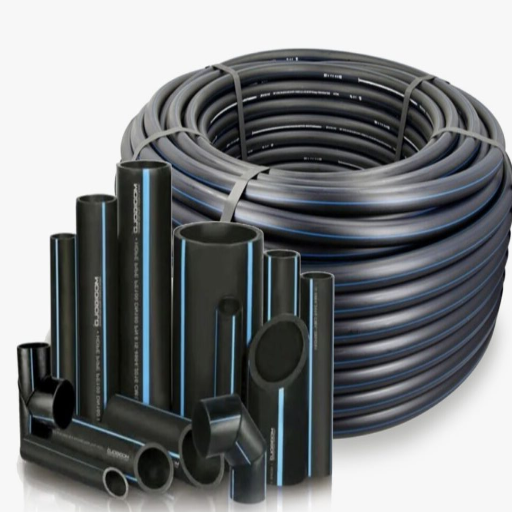
Selecting the Right HDPE Pipe
In selecting the appropriate HDPE pipe for your application, technical and operational considerations should be weighed so as to assure an optimal degree of efficiency and longevity. Below are the primary considerations for your decision-making process:
- Pressure Rating (PN Rating): As the first step, recognize that your system requires the maximum operating pressure. HDPE pipes are then manufactured to satisfy different pressures, which in turn are represented by the PN number of the pipe. Check that the chosen pipe has a PN rating compatible with working conditions to avoid materials breaking down under operational stresses.
- Pipe Diameter and Wall Thickness: Based on flow rate and quantity of material to be handled, HDPE pipe comprises pipe diameters and wall thicknesses, both of which will affect hydraulic capacity and structural strength. High flows or heavy external loads, such as those in buried line projects, call for thicker walls, which add to durability.
- Material Grade and Standards Compliance: Check the material grade (PE63, PE80, or PE100) and compliance with standards such as ASTM, ISO, or EN. High-grade materials (PE100) make it harder for pipes to bend or crack under stress from the environment, hence they are an appropriate choice in industrial-heavy applications.
- Chemical Compatibility: Applications involving chemicals, for instance, in wastewater treatment or chemical transport, should consider pipe materials that resist corrosion or degradation by the chemicals it will encounter.
- Temperature Tolerance: Consider the temperature range your application is working within. While HDPE pipes are resistant to both heat and cold, long-term exposure near their temperature extremes may compromise performance. Verify the pipe’s thermal properties if operating at the high- or low-temperature range.
- Jointing Method: Installation requirements should be considered when choosing the jointing method between the pipe sections; exceptions include butt fusion, electrofusion, and mechanical fittings. Fusion via butt and electro methods is generally preferred for permanent joints and offers the highest integrity during long-term use.
- Environmental and Load Conditions: The external environment needs to be assessed from the UV exposure and soil type to the external load conditions. UV-stabilized HDPE pipes are suited for outdoor installations, while the reinforced type is preferred in locations with heavy-laden machinery or heavy stress.
- Cost-Life Balance: HDPE pipes present competing cost-efficiency due to their long service life and low maintenance, yet the initial costs of HDPE pipe, which depend on specification, vary greatly. Long-term effectiveness should be balanced when considering pipe cost against lifespan and operational efficiency.
Systematically addressing each of the points outlined above will enable the choice of an HDPE pipe meeting your project’s functional requirements without compromising safety, compliance, or performance. Nevertheless, consulting with manufacturers or tech specialists will add further value that is fitting for the specific application.
Pipe Sizes and Diameter Considerations
Choosing the appropriate pipe size and diameter affects the flow characteristics, structural integrity of systems, and the operational efficiency involved in several applications. Pipe diameters are characterized under nominal size, which could be slightly different from the actual internal diameter (ID) or external diameter (OD), based on the material and manufacturing standard. In terms of an example, HDPE pipes conform to standards such as ASTM D3035 or ISO 4427, which provide dimensions and tolerances based on pressure rating and wall thickness.
The engineer must decide the diameter of the pipe with consideration to the flow rate requirements, pressure drop tolerances, and acceptable velocity limits. While large diameters generally offer greater flow capacity, they also bring price implications and installation complications. Disallowing is the scenario where the pipe could experience frictional losses greater than what is actually itself in indefinite workings based on inefficiency or mechanical failure over time. Computational fluid dynamics (CFD) advanced modeling is applied to see how the flow behaves and to forecast its performance when subjected to different operational conditions.
An additional factor is pressure class (PC) or standard dimension ratio (SDR): these define the thickness of the wall and strength of the material. For example, an SDR11 pipe will have thicker walls and thus a higher pressure rating than an SDR17 pipe of the same OD. Linking pipe size and SDR with the pressure and stresses acting in the system ensures long-term reliability is successfully maintained.
Understanding Nominal and Operating Pressure
Nominal pressure (PN) refers to the pressure that a pipe or pipeline element is designed to sustain at a standard temperature, usually 20°C (68°F). This pressure rating is applied for the classification and comparison of piping system components. Nevertheless, in actual practice, the operating pressure (actual) experienced by the system may change considerably due to temperature variations, external loads, transient pressure levels coming from the operation of the system, such as water hammer or surge events.
Accurate operating pressure determination needs to consider static as well as dynamic conditions. Static pressure is steady-state pressure in the system, whereas dynamic pressure arises due to a change in pressure induced by flow velocity, sudden closure of a valve suddenly or even the operation of pumps. In addition to that, temperature also influences both the material properties and stress levels. For instance, materials may weaken in strength and pressure ratings at elevated temperatures and hence should be accounted for in adjusting operational service pressure or even opting for an alternative piping class or material so as to remain safe and serviceable.
Understanding the working of PN and OP, along with accurate calculations and system monitoring, helps the engineers to design and maintain piping systems that meet or exceed safety and performance requirements while giving the highest efficiency and service life.
What is the HDPE Pipe Classification System?
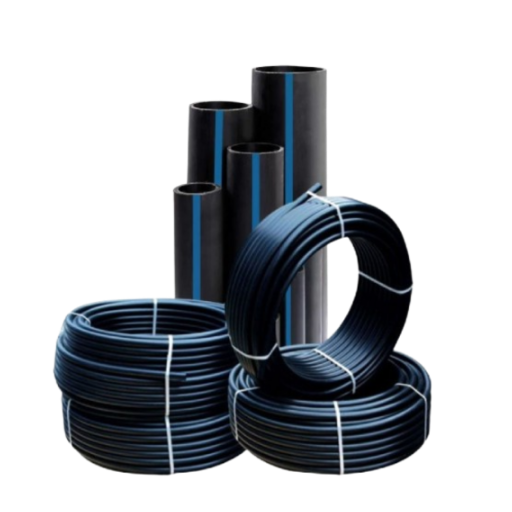
Guide to HDPE Pipe Classification
Considering different standards and classifications allows HDPE pipes to be rated for suitability in particular applications. Days are spent determining working group classifications based chiefly on density, pressure rating, and resistance to environmental stressors. Among others, important standards are PE material grade classifications operating by MRS, that is, Minimum Required Strength in megapascals. Some common materials used in general pipe work include PE 63 and PE 80, with PE 100 diameter pipes being the most potent in strength-to-pressure ratio and are usually used for high-pressure and demanding infrastructure projects.
Pressure ratings are expressed in bar, nominally at 20°C, by placing PN, followed by a numeric value (e.g., PN 10, PN 16). The engineers apply these ratings to pick an appropriate pipe for the working conditions, with good margins being left for safety. Also, pipes are one SDR rating (Standard Dimension Ratio), expressed as the ratio of the pipe outer diameter to its wall thickness; thus, a pipe with a lower SDR has a thicker wall and is hence better in pressure resistance.
With the advancement of polymer technology, these HDPE pipes are equipped with new features, such as better resistance to UV degradation, chemical resistance, and with their service life extended to over 50 years if applied by way of best practice. The pipe properties and the possibilities of flexible pipe design make HDPE pipes very suitable for a variety of water supply systems, sewer networks, agricultural irrigation, and industrial fluid transportation applications.
For instance, PE 100-RC denotes HDPE pipes with greater crack resistance, hence more suited to trenchless installation applications such as directional drilling or pipe bursting. This, in turn, has greatly revolutionized HDPE pipe applications where minimum surface disruption is required.
Understanding deep-down classifications of HDPE helps engineers and decision-makers fashion cost-effective, dependable piping solutions amenable to specific project requirements.
Rating of an HDPE Pipe
These properties form the very characteristics of the pipe when it comes to rating an HDPE pipe concerning its internal pressure (PN), SDR (standard dimension ratio), and classification code to represent its physical and performance behavior under given conditions. The pressure rating (PN) corresponds to the working pressure during pipe service in units of bar, the application being stated at 20°C for a maximum assumed lifetime of 50 years. An HDPE pipe with a larger PN rating will withstand a higher pressure and will be used for water distribution and industrial pipelines with higher pressures.
The Standard Dimension Ratio (SDR) can be considered a numerical value of the ratio of the pipe wall thickness to the outer diameter of the pipe. Pipes with smaller values of SDR have thicker walls that inherently offer higher pressure resistance. The SDR11 pipe, for instance, is stronger and therefore offers the utmost resistance to pressure when compared with the SDR17 pipe. Thus, the interaction between SDR and PN during the selection of pipe material is important not only in making the pipeline strong or stable but also in making the pipeline flexible enough for installation.
The other major parameter is the material grade, which is governed by the polyethylene classifications of PE 63, PE 80, and PE 100. These designate the minimum required strength (MRS) of the material in megapascals (MPa). PE 100 pipes provide the highest advanced grades, having the greatest strength-to-density ratio; hence, thinner walls are possible, which leads to a reduction in material costs and increased flow capacity.
With the knowledge of these ratings, it becomes easier to select HDPE pipes that exactly meet the needs of each project for optimum performance, service life, and environmental considerations, apart from industry standards. Proper evaluation of ratings also ensures risk assessment for important applications such as potable water systems, gas distribution networks, and chemical transport pipelines.
Understanding Internal and External Pressure
In acting internally or externally, pressure affects HDPE pipes by way of determining their structural integrity and behavior under varying conditions. Internal pressure comes from the fluid or gas within the pipe and must be calculated according to working pressure, transient surges, and temperature changes. Usually, the internal pressure of an HDPE pipe is rated by considering the hydrostatic design basis (HDB) of the pipe and the pipe’s standard dimension ratio (SDR).
In contrast, external pressure arises from environmental or operational forces acting from outside on the pipe. Such demands may include soil weight, hydrostatic pressure in submerged conditions, or mechanical loads due to construction activities. This sort of pressure imparts a measure of flexibility to the pipe as well as counters the pipe’s resistance against buckling. A pipe’s stiffness class (SC) about trench depth and surrounding soil type will present critical information to evaluate its ability to resist the external forces.
Both pressure types must be taken into account for the design of the system so that indisposition will never befall any installation, be it for municipal water distribution or the transport of some industrial chemicals. Advanced modeling techniques backed by field data and international standards compliance, like ISO 4427 and ASTM D303.5 enable engineers to predict performance and help in risk diminution.
Reference sources
- Plastics Pipe Institute (PPI) Handbook of Polyethylene Pipe
The PPI Handbook provides detailed guidelines on polyethylene piping systems, including pressure rating considerations. It covers topics from material properties to design and installation practices, ensuring reliable information for engineers and constructors. Access this handbook on the PPI website: Plastics Pipe Institute.
- ISO 4427-2:2007 – Plastics piping systems — Polyethylene pipes and fittings for water supply
This international standard outlines the specifications for polyethylene pipes, including pressure ratings, performance tests, and installation procedures. It offers guidelines consistent with global best practices, making it an invaluable reference for anyone involved in HDPE pipe projects. The full document is available through the International Organization for Standardization: ISO.
Frequently Asked Questions (FAQs)
Q: What are HDPE pipes, and where are they commonly used?
A: HDPE (High-Density Polyethylene) pipes are a type of plastic pipe known for their high durability and flexibility. They are commonly used in various applications, including gas and water distribution, due to their ability to withstand pressure and resist corrosion.
Q: How do I choose HDPE pipes for my project?
A: When choosing HDPE pipes for your project, consider the pressure rating of the pipe, the type of fluid and gas it will carry, and the environment in which it will be installed. This ensures the pipes can handle the pressure and conditions they will face.
Q: What does the pressure rating of an HDPE pipe indicate?
A: The pressure rating of the pipe, usually measured in bars, indicates the maximum pressure the pipe can support with water or gas. It reflects the pipe’s ability to withstand pressure without failing.
Q: What are the different types of HDPE pipes and their pressure grades?
A: There are different types of HDPE pipes, each with varying pressure grades. These grades determine the capacity of the pipe to handle high-pressure or moderate-pressure environments. Choosing the correct grade is crucial to avoid pipe failure.
Q: How does the grading of HDPE pipes affect their performance?
A: Grading HDPE pipes involves assessing their pressure rating and material quality. Higher grades indicate a greater ability to withstand pressure, making them suitable for more demanding applications such as natural gas distribution.
Q: Can HDPE pipes be used for both fluid and gas transport?
A: Yes, HDPE pipes can transport both fluid and gas. Their design allows them to handle different types of HDPE applications, including water pipe systems and natural gas distribution, while maintaining their integrity under pressure.
Q: What are the benefits of using HDPE pipes over other types of pipes?
A: HDPE pipes offer several benefits over other pipes, such as superior flexibility, resistance to corrosion, and a higher ability to withstand pressure. They are also lightweight, making them easier to install and transport.
Q: How do I determine the correct HDPE pipe size for my needs?
A: Understanding HDPE pipe sizes involves considering the flow rate and pressure requirements of your system. The ultimate guide to HDPE pipe selection will help you match the pipe size to your specific needs, ensuring efficiency and reliability.
Q: What precautions should be taken to prevent HDPE pipe failure?
A: To prevent pipe failure, ensure that the chosen HDPE pipe matches the required pressure that the pipe will experience. Regular maintenance and proper installation are also crucial to extending the lifespan of the pipes.
Q: Are there HDPE pipes that can handle lower-pressure applications?
A: Yes, there are HDPE pipes with different pressure ratings designed for lower-pressure applications. These pipes are suitable for systems where the pressure in bars the pipe needs to handle is moderate, offering a cost-effective solution.



